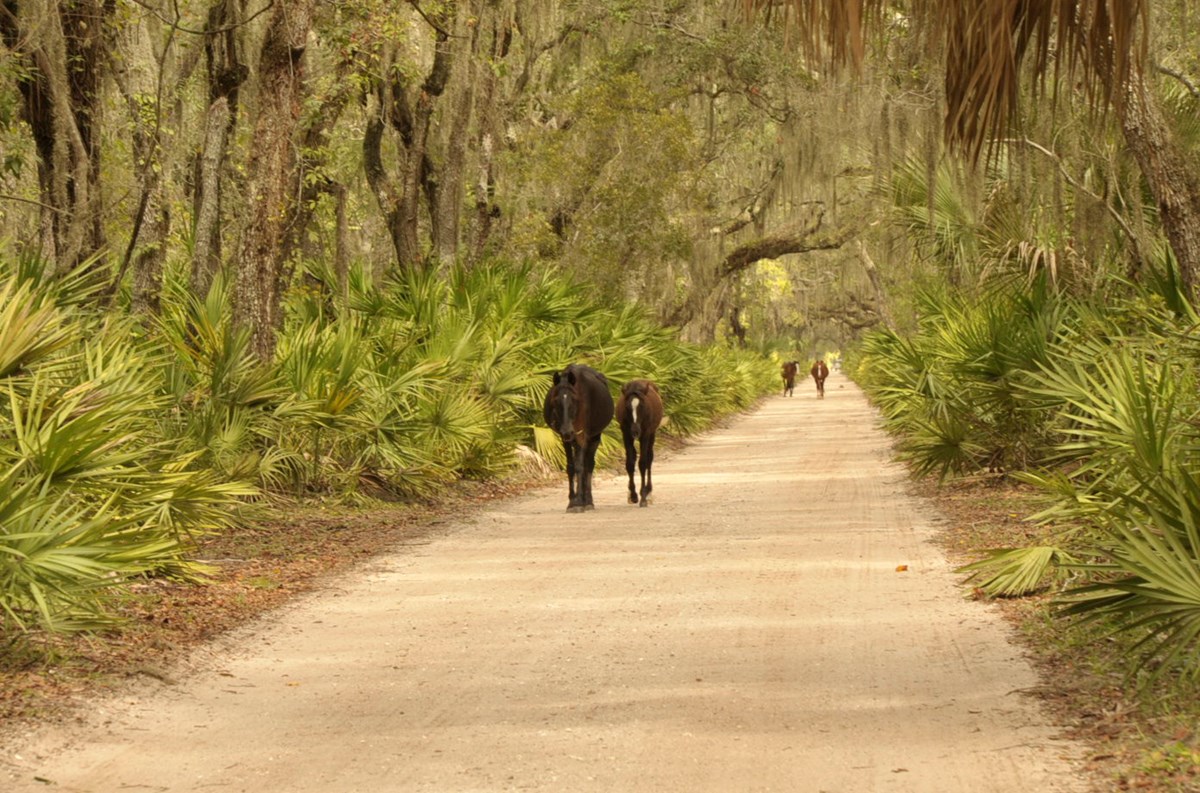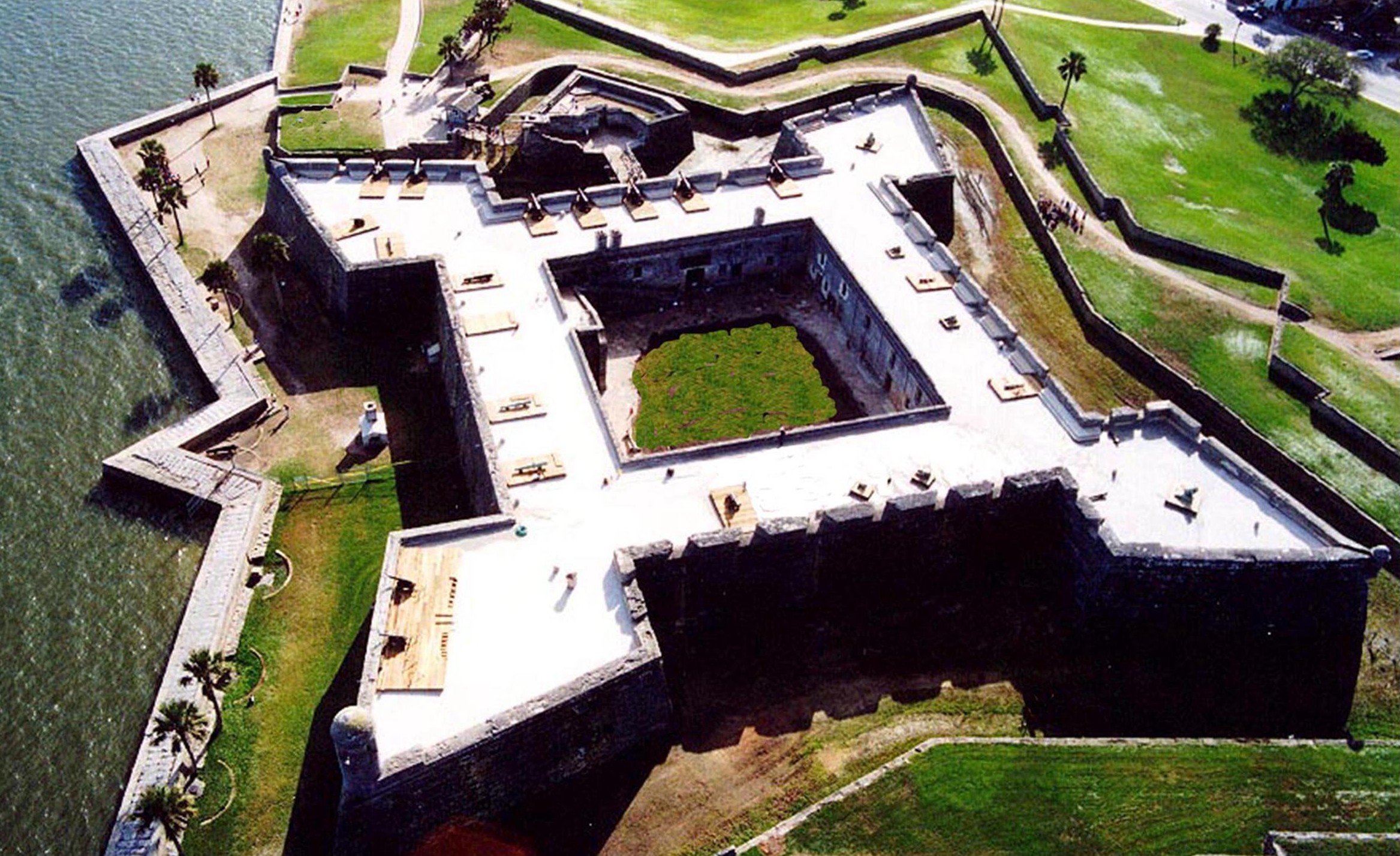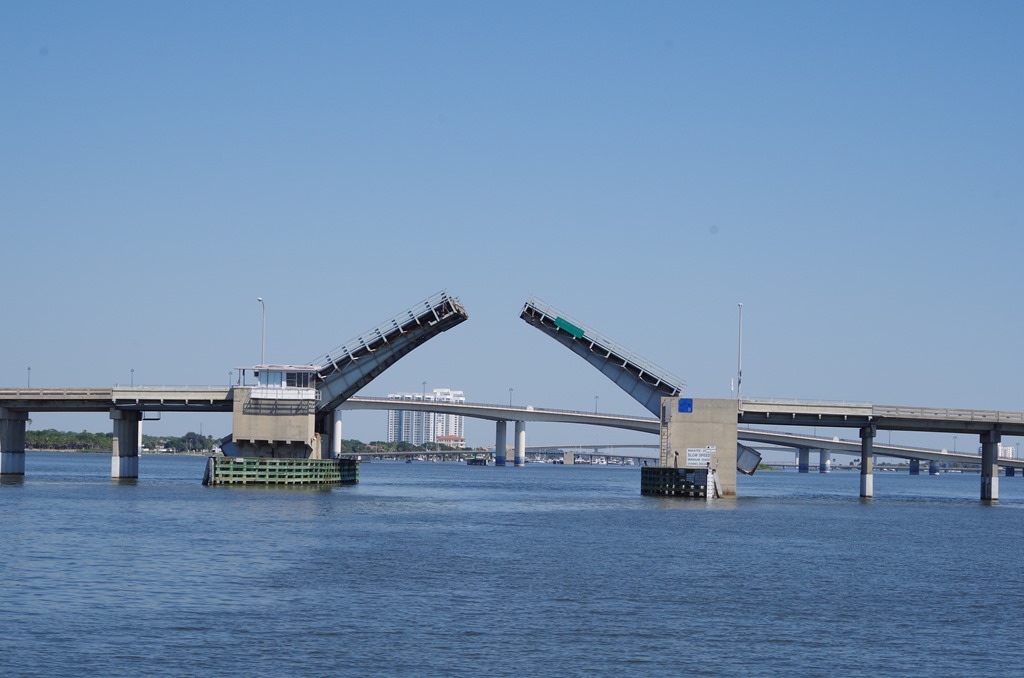An old 662 acre pre American Revolutionary property came into the possession of Thomas Young around 1758. In 1836 the land was sold to Charles Rogers and he built the wooden frame house that still exists today. The land was used to raise Sea Island cotton. During the Civil War a union gunboat shelled the property from the Bear River leaving a hole in the side of the house that was later repaired. Kilkenny has changed hands several times since then and is presently owned by the owners of the Marina who also lived there as children. A beautiful house with several outbuildings surrounded by very old live oak trees, you can see where they lined the original driveway which is now a road. The locals claim the live oak trees are as much or more than 300 years old which is easy to believe looking at the massive size of their trunks.
An interesting feature of the marina is the boat
ramp/lift. Because the banks are so
steep boat ramps are not feasible so the marina opted for a lift. The best way I can explain it is to show you,
so here is a series of pictures that hopefully will explain this system to those not familiar with this kind of boat lift.
And there you have it , from water to parking lot.
We met an alligator hunter at the marina named Tony. He shared some interesting stories that
confirmed that I will never swim in these waters. He takes people out alligator hunting and
claims there are some 10-11 foot alligators in the area. He also explained how you can tell the length
of an alligator by just seeing the snout.
If you can estimate the distance in inches from the eyes to the end of
his snout and then convert to feet you will have the length. For example an alligator with 10 inches from
eyes to end of snout will be 10 feet. Although
we couldn’t prove it, we got to put it to practice when we saw an alligator
swimming onto shore and estimated it was 3-4 feet.
We really enjoyed our stay at this fisherman’s marina.
Movin' on to South Carolina ~~~~~~~~~~~~~~


































